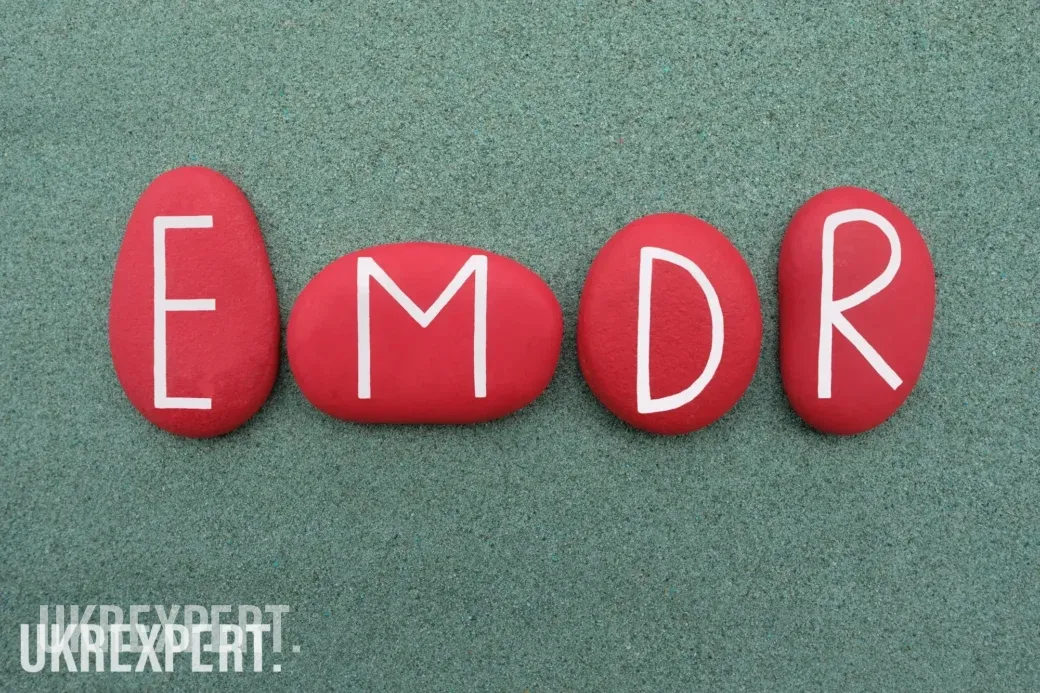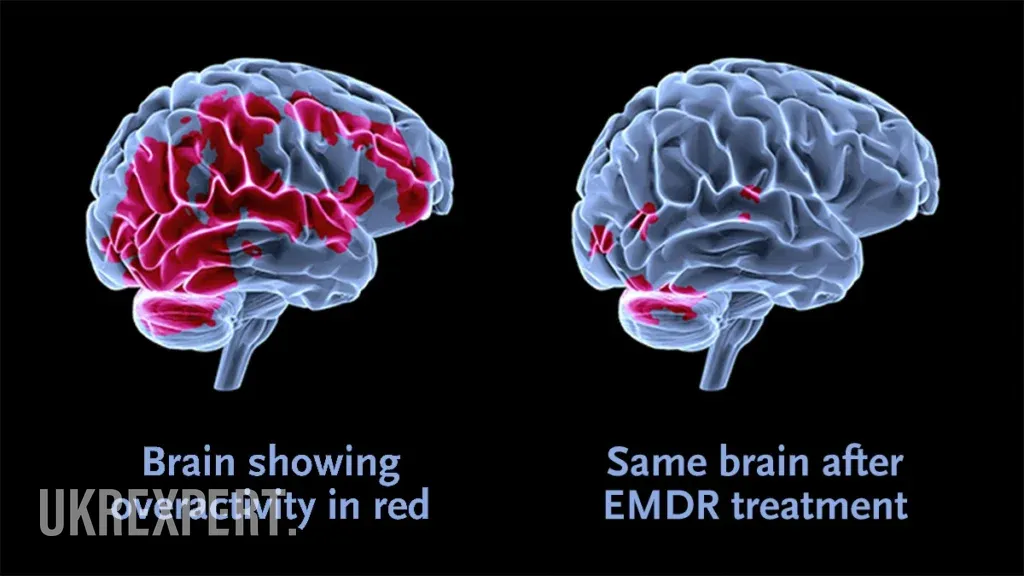
What is Emdr: how does Emdr therapy work and why is it effective against trauma?

Emdr is a therapy that helps to overcome the effects of psychological trauma. It is based on the principle of self-healing of the psyche with the help of specific eye movements.
Psychologists say that severe trauma and stress have long-lasting effects, and even if a person rarely recalls a traumatic experience, the event remains in the brain for a long time. Emdr therapy can help overcome this.
Emdr is an innovative clinical treatment that has already helped millions of people who have gone through traumatic experiences. Those who have been in an accident, experienced violence, acts of terrorism or war.
What is Emdr therapy?
Emdr therapy (Eye Movement Desensitization and Reprocessing) is a psychotherapy method that helps people overcome the effects of traumatic events. Its name translates to “Eye Movement Desensitization and Reprocessing” because the therapy uses eye movements, sounds, or vibrations to stimulate the brain.
The method is based on the idea that traumatic experiences can remain locked in the brain and cause problems later in life. This can lead to various mental health problems. Emdr helps to process these experiences, destroying their negative impact.
How did the Emdr psychotherapy method come about?
The Emdr psychotherapy method was created by Francine Shapiro in 1987. The legend says that Mrs. Shapiro learned that she had cancer. When she left the hospital, she went for a walk in the park in a completely depressed state. There she stopped and watched the birds land on the water and take off again. After a while, Francine was surprised to notice that her mood was getting better. It was then that she began to investigate why this might be happening and developed the Emdr.
What else you need to know about Emdr – watch the video
Do you prefer watching to reading? Then watch the video about Emdr:
Who can Emdr help and in what cases?
Is the Emdr method effective in treating different types of traumatic experiences? Namely:
- Psychological trauma: Post-traumatic stress disorder (PTSD), acute stress disorder, consequences of abuse, accidents, natural disasters, etc.
- Anxiety disorders: panic attacks, generalized anxiety disorder, social anxiety disorder, phobias, fears in children.
- Depressive disorders: depression, loss of a loved one.
- Difficult life events: divorce, job loss, health problems.
For example, a person has experienced a serious car accident. It was a shock for him or her, so he or she becomes afraid to get into a car and even has nightmares about accidents. This means that the brain cannot process traumatic experiences on its own, which affects the quality of life. Therapy allows you to recover and restore normal information processing. EMDR therapy can help people recover from trauma and move on with their lives much faster than traditional methods.
Read also our article: What is open Gestalt and how does Gestalt therapy work?
How does Emdr therapy work?
Emdr therapy uses visual, auditory, or tactile stimuli, such as eye movements or sound signals, to activate different parts of the brain and help process traumatic experiences.

This innovative method of psychotherapy uses bipolar stimulation to process and heal from trauma. Stimulation can be in the form of:
- Eye movements: Horizontal eye movements that activate opposite sides of the brain.
- Tactile stimuli: patting or touching the arms or shoulders.
- Sound stimuli: alternating sounds in different ears.
During Emdr therapy, brain stimulation helps:
- “Bring traumatic memories to the level of awareness.” These memories are “stuck” in the nervous system and periodically remind of themselves in the form of symptoms such as nightmares, flashbacks, anxiety.
- To start the natural process of “digesting” information. The brain “unpack” the traumatic memory and turns it into a part of life experience.
- Free the psyche from “blocked” memories. This leads to a reduction or even complete disappearance of trauma symptoms.

This method reduces sensitivity, so the brain stops being “afraid” of events that traumatized it in the past. In other words, the therapy starts the process of processing stressful memories. Thanks to eye movements, negative information passes faster through neurophysiological pathways before it is integrated with positive information. The person remembers the stress, but it no longer scares them.
Emdr therapy: 8 steps to healing
During Emdr therapy, a specialist works according to the following 8-step scheme:
- Life history and goal setting. The therapist gets to know the client and his or her history to determine which traumatic memories need to be worked through.
- Preparation. The therapist explains to the client how the therapy will take place and teaches them self-regulation techniques.
- Assessment of the traumatic memory. The client recalls the traumatic memory and describes their emotions and feelings.
- Desensitization. The client recalls a traumatic memory while focusing on eye movements, sounds, or vibrations.
- Installation of a positive cognitive statement. The client formulates a positive statement about themselves that will help them feel better.
- Body scanning. The client focuses on the sensations in his or her body to release emotional tension.
- Closing. The therapist helps the client to end the therapy session and gives them recommendations for the next time.
- Repeated sessions. Therapy continues until the client has processed all traumatic memories.
The Emdr method is recommended by the WHO as the first method when dealing with trauma or stress disorder.
Recommendations from other organizations:
EMDR therapy is also recommended by other organizations such as:
- American Psychiatric Association (APA)
- International EMDR Association (EMDRIA)
- Ukrainian Association of EMDR (UkrEMDR)
You can read about the effectiveness of therapy in the treatment of PTSD on the website of The Lancet Psychiatry.

Why is Emdr becoming more and more popular in the world?
The Emdr method is increasingly being used by psychotherapists. It is effective, fast, safe, and almost universal. Studies have shown that EMDR is an effective treatment for PTSD and other psychological problems. Moreover, patients can feel improvement after just a few sessions with a specialist.
The method has no contraindications and no serious negative consequences. It is used in adult and pediatric therapy.
With a full-scale war going on in Ukraine, many people are experiencing traumatic events and stress every day. If a person cannot cope with this on their own, it makes sense to seek help and try EMDR therapy with a specialist: EMDR International Association: https://emdr.com.ua/.
Frequently asked questions about Emdr therapy
For example, EMDR can help to deal with internal conflicts by working with the patient to process traumatic experiences and negative beliefs that may be associated with these conflicts.
For example, EMDR can be very useful for treating children, as they often have difficulty expressing their emotions, and this method allows them to process traumatic experiences without the need for verbal expression.
Yes, you can get EMDR therapy online. This can be a convenient option for people who live in rural areas or are unable to visit a therapist in person.
EMDR therapy differs from other psychotherapies in that it uses bipolar brain stimulation. This stimulation helps activate the opposite sides of the brain and unlock traumatic memories, reduce emotional stress, and speed up the healing process.
The number of sessions depends on the complexity of the injury and the individual characteristics of the client. On average, people need 8-12 sessions, but some may need more or less.
The author of the Portal UKRexperts
Співпраця - текст
We are sure that knowledge should be accessible to everyone, and that is why UkrExperts strives to be your first choice when it comes to enriching intellectual potential.



